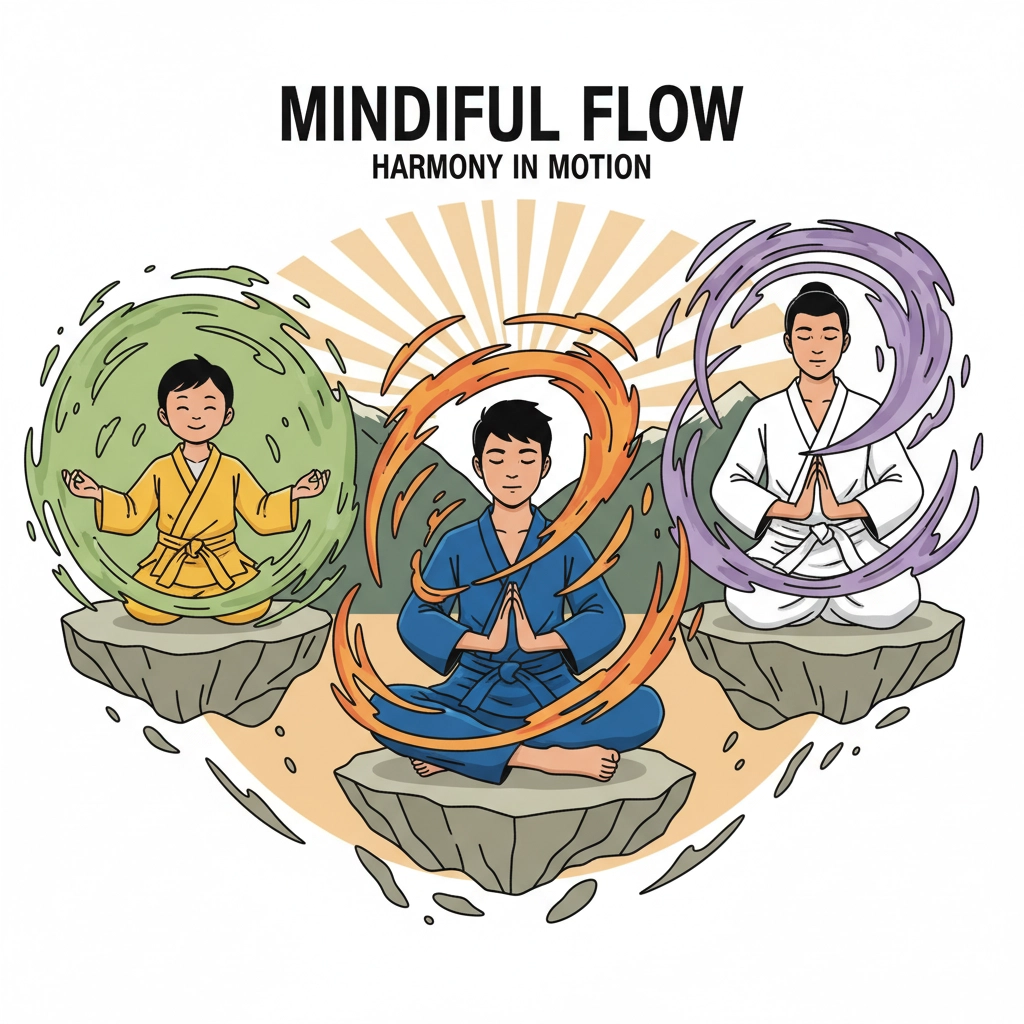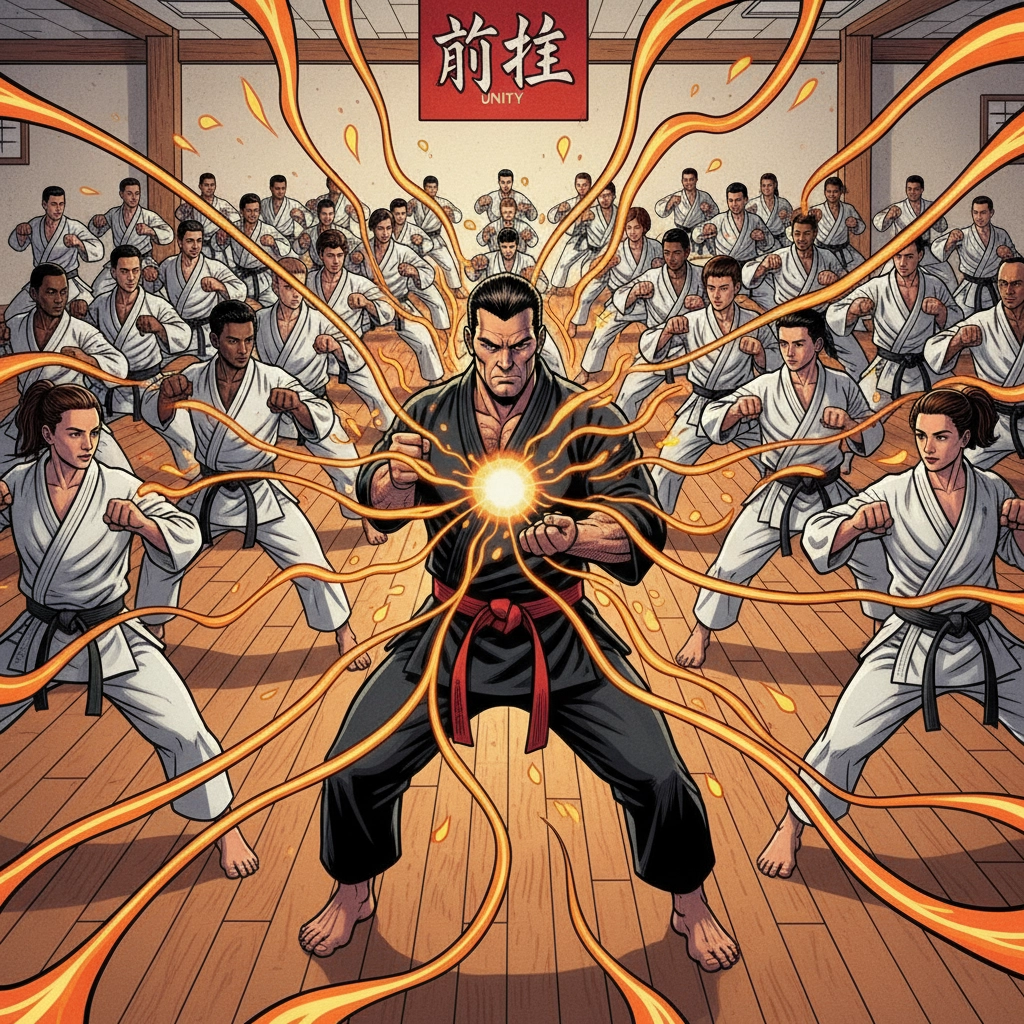Hey everyone! If you've been running a martial arts school for a while, you've noticed something interesting over the last year. Students are coming in more stressed than ever, juggling work, school, social media, and other distractions, which makes it challenging for many of your students to focus during training.
Here's the thing: you don't need to become a meditation guru or completely overhaul your curriculum to help them. By integrating just 5 minutes of mindfulness practice into your regular classes, you can dramatically improve your students' focus, reduce their stress, and enhance their martial arts performance.
And this all leads to better retention.
Why Mindfulness Matters in Martial Arts
Before we dive into the how-to, let's talk about why this works so well. Martial arts and mindfulness are natural partners. Both require present-moment awareness, controlled breathing, and the ability to stay calm under pressure. When you combine them intentionally, you're giving your students a powerful tool they can use both on and off the mat.
Your students will see improvements in reaction time, technique precision, and mental clarity. Plus, they'll leave your classes feeling more centered and less stressed, which means they're more likely to stick around and recommend your school to others.

The 5-Minute Structure That Works
Here's a simple framework you can drop into any class, whether you're teaching kids or adults, beginners or advanced students. It's divided into three parts, each lasting just 5 minutes of your class time.
Pre-Training: The 2-Minute Reset (Start of Class)
Instead of jumping straight into warm-ups, begin each class with 2 minutes of intentional breathing and mental preparation. This isn't about sitting cross-legged and chanting: it's about getting everyone's mind in the same place.
Have your students stand in a ready position. Guide them through controlled breathing: inhale deeply through the nose for a count of four, hold for two counts, then exhale through the mouth for six counts. Do this for about a minute.
During the second minute, introduce a simple visualization. Ask them to rehearse one technique they want to mentally improve that day. Have them visualize themselves performing it perfectly: seeing the movement, feeling their body mechanics, even imagining the satisfaction of executing it correctly.
This isn't woo-woo stuff. Visualization actually helps build muscle memory and increases confidence before students even start moving. Your students will be more focused from the first drill onward.
Mid-Training: The 1-Minute Recenter (Between Rounds)
Here's where most schools miss an opportunity. Instead of letting students chat or check their phones between sparring rounds or drills, use those natural breaks for quick mindfulness resets.
Call for 30 seconds of controlled breathing between rounds. Students remain in position but focus entirely on their breath. This helps them release tension, lower their heart rate slightly, and approach the next round with fresh mental energy.
Use the remaining 30 seconds for a quick body check. Have them scan from head to toe, noticing any tension or fatigue. This builds body awareness that helps prevent injuries and improve technique.

Post-Training: The 2-Minute Integration (End of Class)
Don't let students rush out the door immediately after training. Those final 2 minutes are crucial for helping them carry the benefits of training into their daily lives.
Start with 1 minute of reflection. While students are still in formation, ask them to reflect on one thing they did well during class and one area they want to improve on next time. No sharing required: this is personal reflection time.
Finish with 1 minute of gratitude and intention setting. Have students silently acknowledge their training partners and their own effort, then set an intention for how they'll carry their martial arts mindset into the rest of their day.
Making It Work for Different Ages
Kids Classes (Ages 6-12)
Please keep the language simple and make it interactive. Instead of "controlled breathing," call it "power breathing" or "ninja breathing." Use relatable imagery, such as: "breathe like a sleeping dragon."
For visualization, make it fun: "Close your eyes and see yourself as a martial arts superhero performing your best kick." Kids respond well to imaginative language.
Teen Classes (Ages 13-17)
Teens often resist anything that seems "kiddy," so frame mindfulness as mental training for performance. Explain how professional athletes use these techniques. Talk about focus, mental toughness, and stress management for school and social situations.
Adult Classes
Adults appreciate understanding the science behind what they're doing. Briefly explain how controlled breathing activates the parasympathetic nervous system, reducing stress hormones and improving focus. Many adults are dealing with work stress and will immediately see the value.

Overcoming Common Objections
"We don't have time for this." You're not adding time to your classes: you're actually helping students get more out of their training by keeping them more focused for the duration.
"Some students think it's weird." Frame it as performance training, not meditation. Use terms like "mental conditioning," "focus training," or "tactical breathing." Emphasize the practical benefits, including better reflexes, improved technique, and increased mental toughness.
"I don't know enough about mindfulness to teach it." You don't need to be an expert. You're simply guiding breathing exercises and brief moments of focused attention. Stick to the basics: breathe slowly, pay attention to the present moment, notice what your body is telling you.
Advanced Integration Techniques
Once your students are comfortable with the basic structure, you can weave mindfulness throughout your entire class without adding time.
Mindful Warm-ups: Instead of going through the motions, have students pay complete attention to each movement during warm-ups. Ask them to notice which muscles are engaging, how their balance shifts, and what their breathing is doing.
Present-Moment Drilling: During technique practice, remind students to stay completely present with their partner and the movement they're working on. When minds wander (and they will), guide attention back to the drill.
Mindful Sparring: Before sparring rounds, remind students to stay aware of their breathing, their stance, and their emotional state. Please encourage them to notice when they get excited or frustrated and use breathing to remain centered.

Benefits You'll See in Your School
Students who regularly practice these mindfulness techniques typically show:
- Improved focus during drills and sparring
- Better emotional regulation when techniques don't work perfectly
- Increased class retention rates
- More respectful behavior toward training partners
- Better stress management outside of class
- Enhanced performance during testing and competitions
Teaching Your Staff
If you have assistant instructors, consider dedicating time to train them on this approach. The key is consistency: every instructor should use the same basic structure and language. This creates a school culture where mindfulness is simply part of the training process.
Give your staff permission to start slowly. They don't need to implement everything at once. Start with the 2-minute opening breathing exercise and gradually incorporate the other elements as everyone becomes comfortable.
Making It Sustainable
The beauty of this approach is its simplicity. You're not asking students to sit in meditation for 20 minutes or completely change how they think about martial arts. You're just adding intentional awareness to things they're already doing: breathing, moving, and reflecting on their training.
Start with one element (maybe the opening breathing exercise) and add others gradually. Pay attention to how your students respond and adjust accordingly. Some groups will embrace it immediately; others may need more time to see the benefits.

The Bottom Line
Integrating mindfulness into martial arts training isn't about changing your entire teaching style or becoming a meditation teacher. It's about using five strategic minutes to help your students get more out of every class they attend.
Your students are already coming to you to learn focus, discipline, and mental toughness. These simple mindfulness practices make those benefits more explicit and more transferable to their daily lives. Plus, these techniques enhance your teaching presence and make the class more enjoyable.
Try the basic 5-minute structure for a few weeks and see the results for yourself. You might be surprised by how a small change can make a significant difference in your school's training environment and your students' overall experience.
Remember, you're not just teaching martial arts techniques: you're helping people develop tools for handling stress, staying focused, and remaining calm under pressure. That's valuable stuff, and it's precisely what your students need in today's world.

